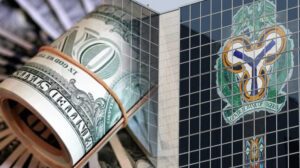External reserve loses $24m first week of 2022
Nigeria’s external reserve dipped $24.3 million in the first week of the year to close at $40.49 billion as of 7th January 2021. This represents a 0.06% decline when compared to $40.42 billion recorded as of the start of the week.
This is according to data from the Central Bank of Nigeria (CBN) on the daily reserve movement.
The nation’s foreign reserve had gained $5.99 billion in October, following a $2.76 million gain recorded in September 2021 as a result of the $4 billion Eurobond secured by the federal government and the $3.35 billion IMF Special Drawing Rights facility.
However, the reserve started a downward movement in November after it has crossed the $41 billion mark. Nigeria’s external reserve lost $611.01 million in November, which was followed with a $666.17 million decline in December.
Meanwhile, the annual gain for 2021 was $5.15 billion.
The continuous decline in the nation’s external reserve is attributable to the intervention by the apex bank in ensuring forex stability in the country. Data from the Central Bank shows that a total of $8.97 billion was supplied by the bank to the I&E window, SME, and Invisibles.
The Investors and Exporters window (I&E) is the official market for the sale of foreign exchange in the country after the Central Bank halted the sale of forex to BDC operators mid-2021. However, a sum of $2.77 billion had been sold to the BDC operators between January and June 2021.
Given the managed floating foreign exchange system adopted by the apex bank, the CBN occasionally intervenes in the forex market to ensure they manage the volatility that could be witnessed in the market by releasing funds from the reserve.
A closely look on the I&E Window, at least a sum of $337.7 million was traded on the exchange, while the official exchange rate appreciated by 4.3% to close at N416.25/$1 in the review week compared to N435/$1 recorded as of the end of the previous week.
Foreign reserves are assets held on reserve by the central bank of a country used to back liabilities and influence monetary policy. They include foreign banknotes, deposits, bonds, treasury bills and other foreign government securities.
These assets serve many purposes but are most significantly held to ensure that a government or its agency has backup funds if their national currency rapidly devalues. Foreign exchange reserves are also called international or external reserves.




